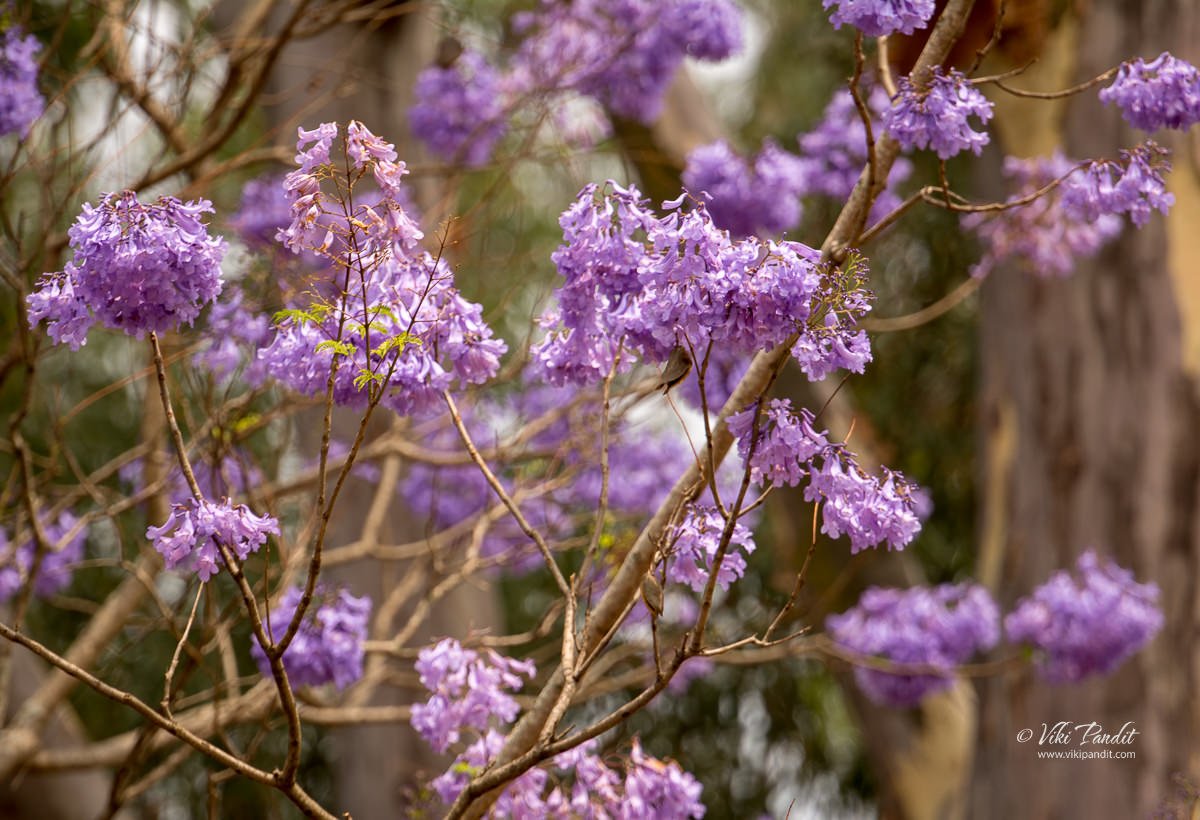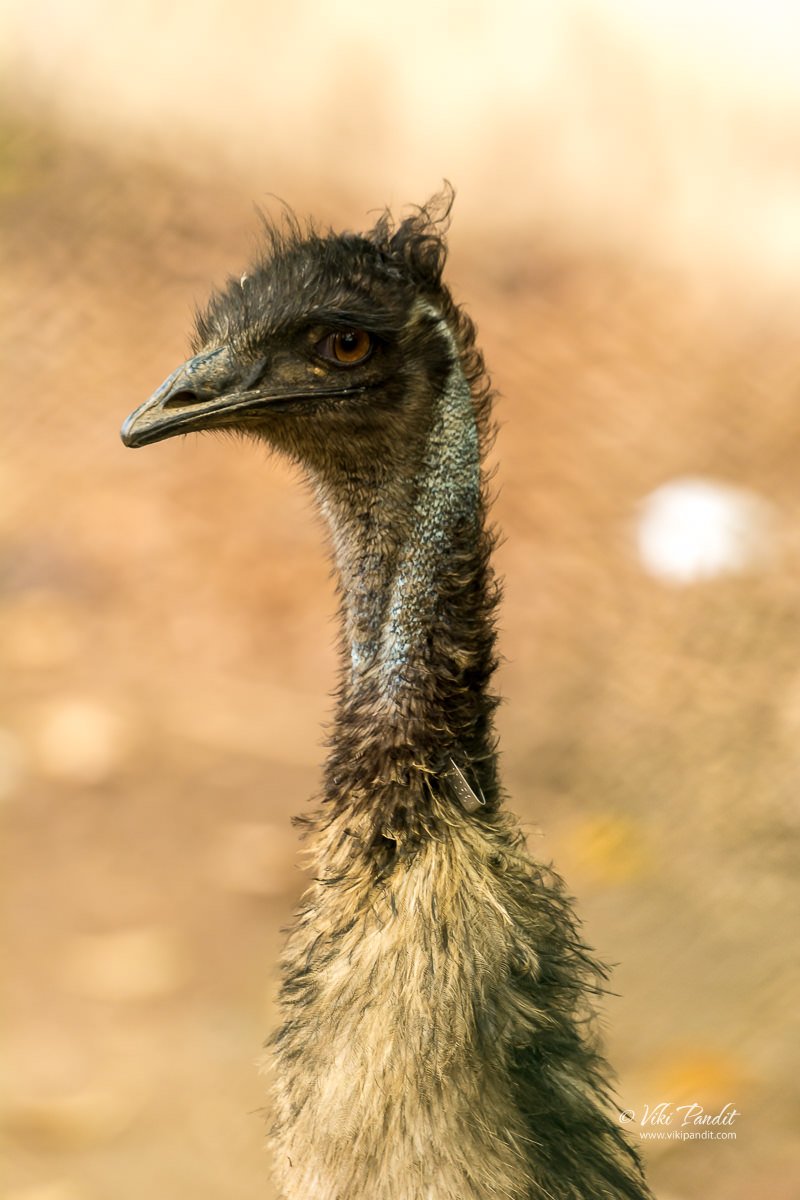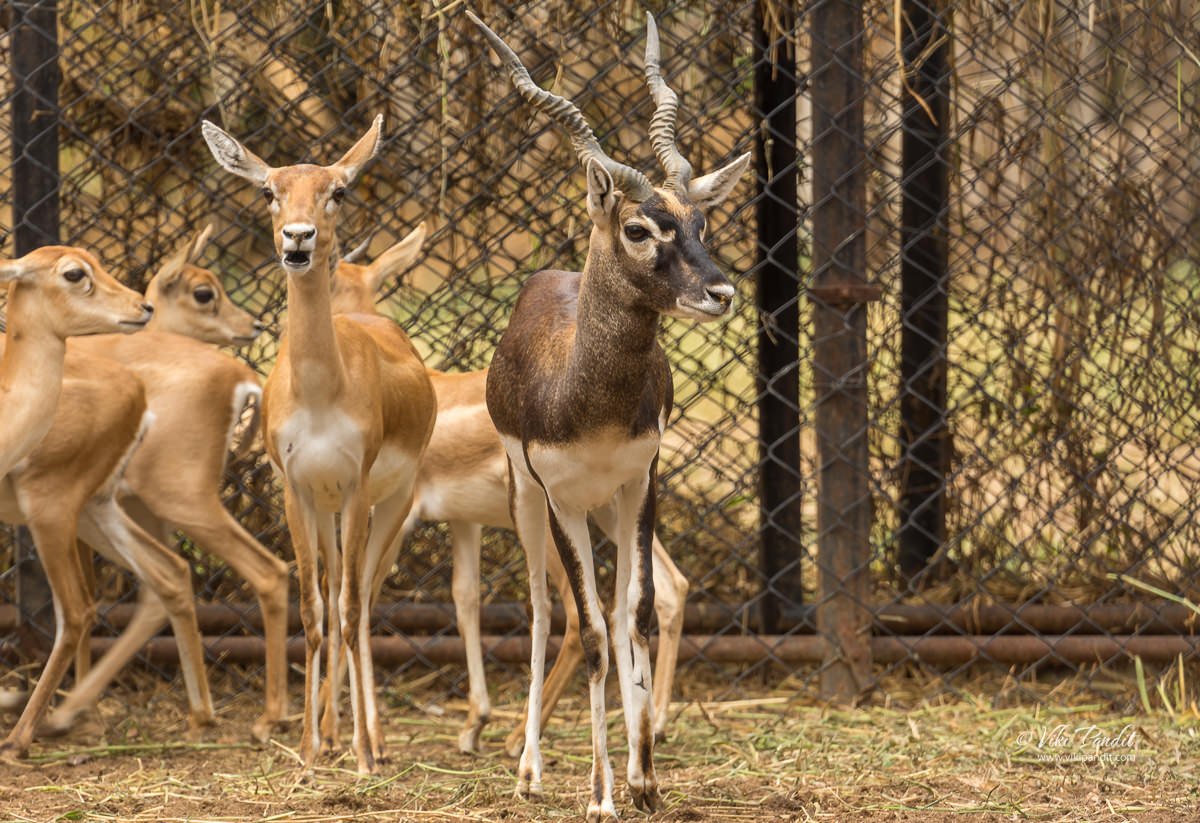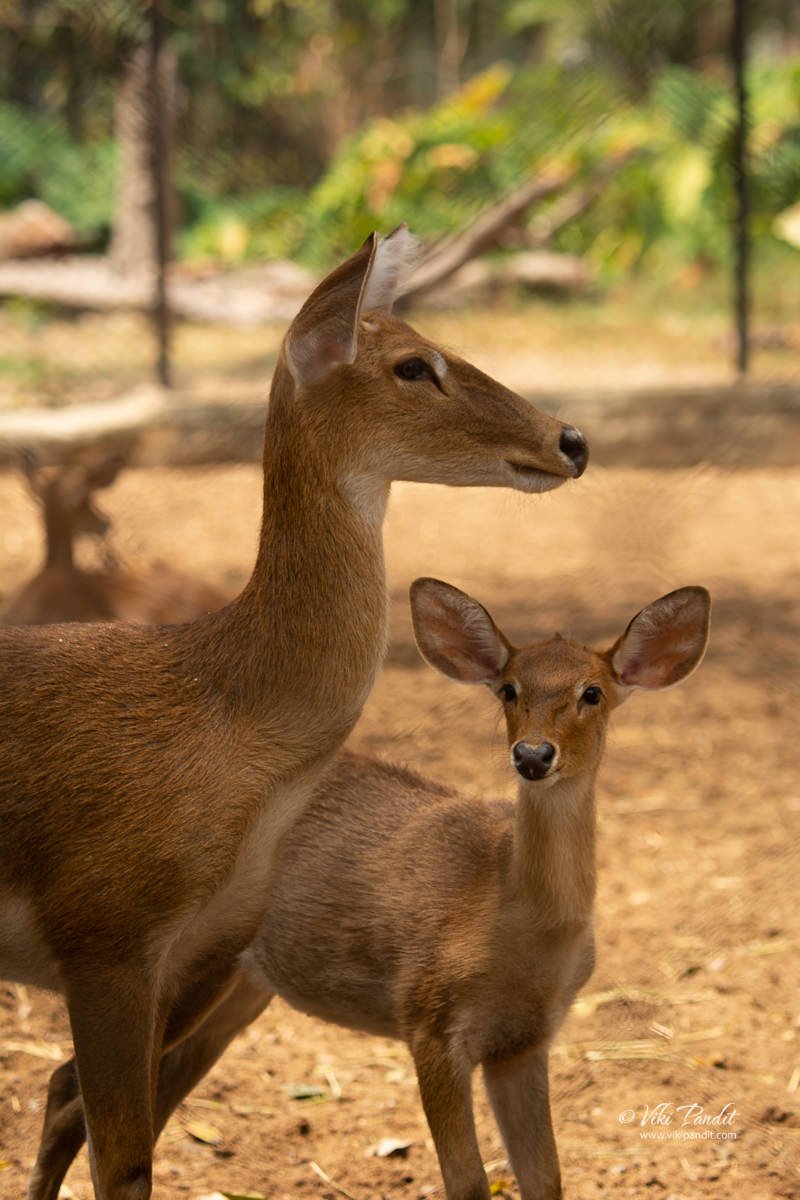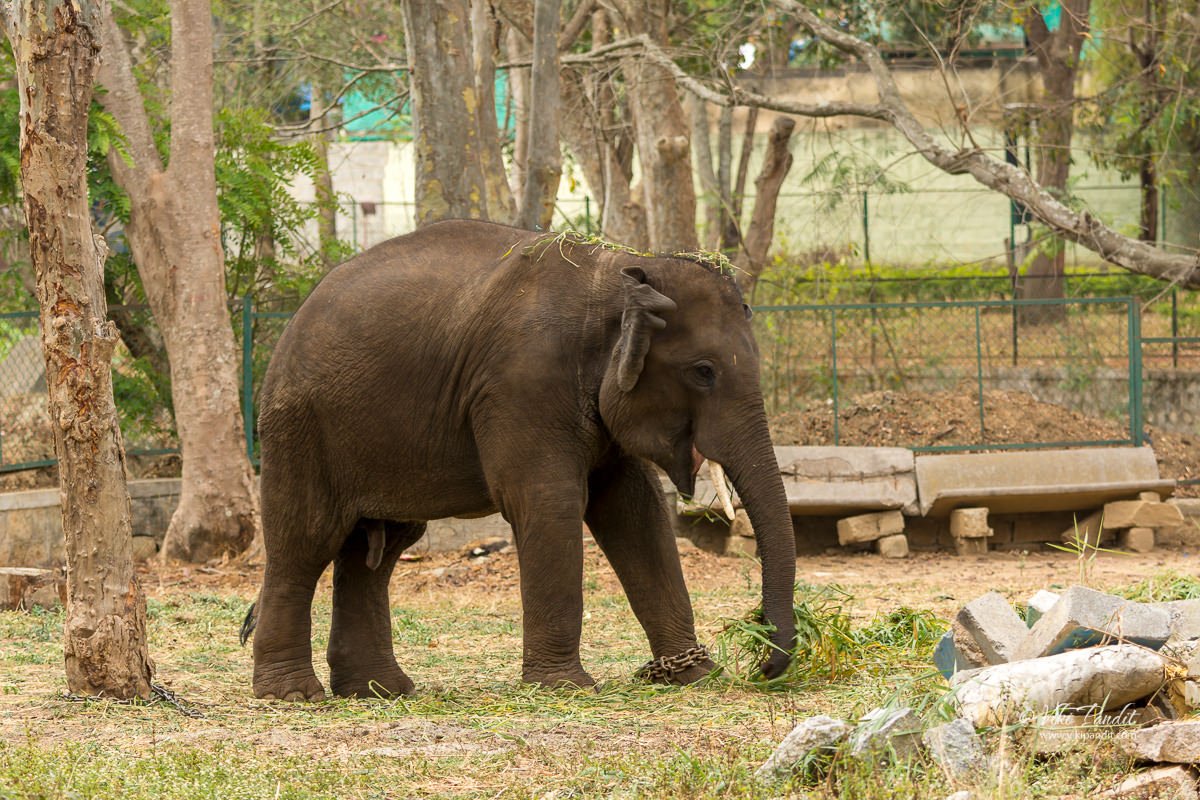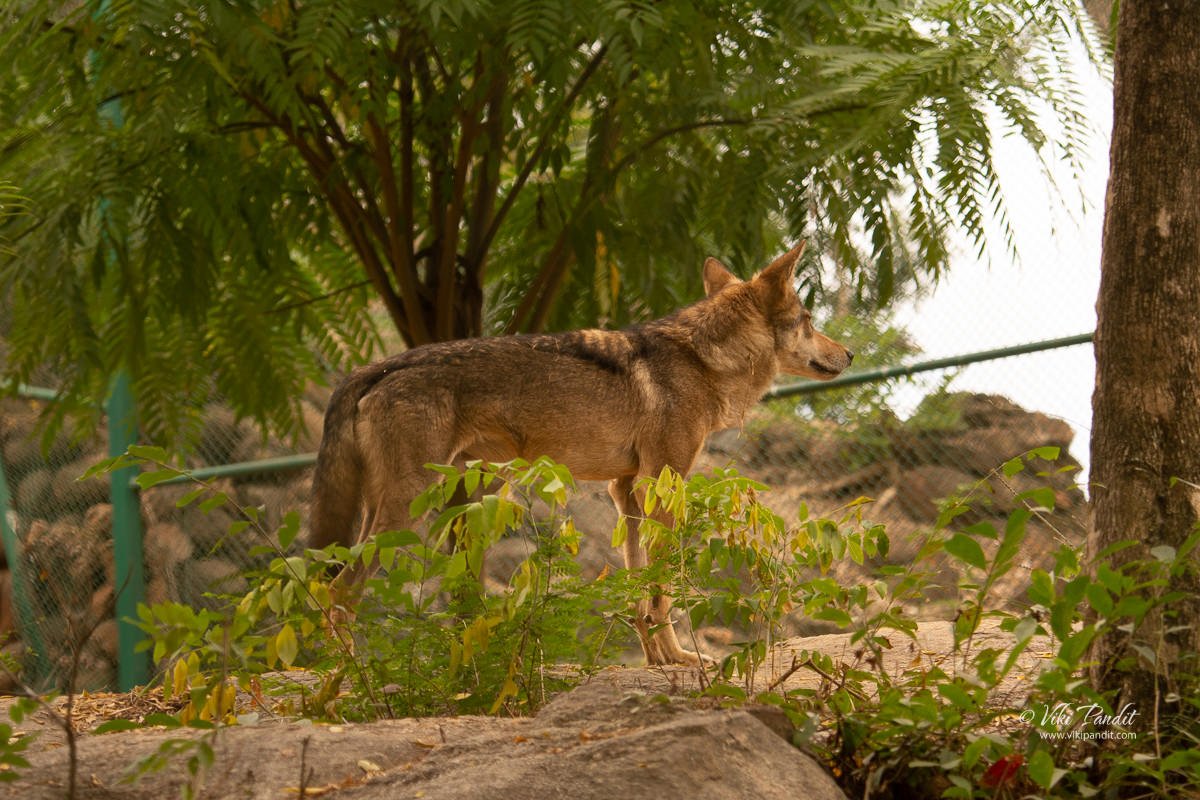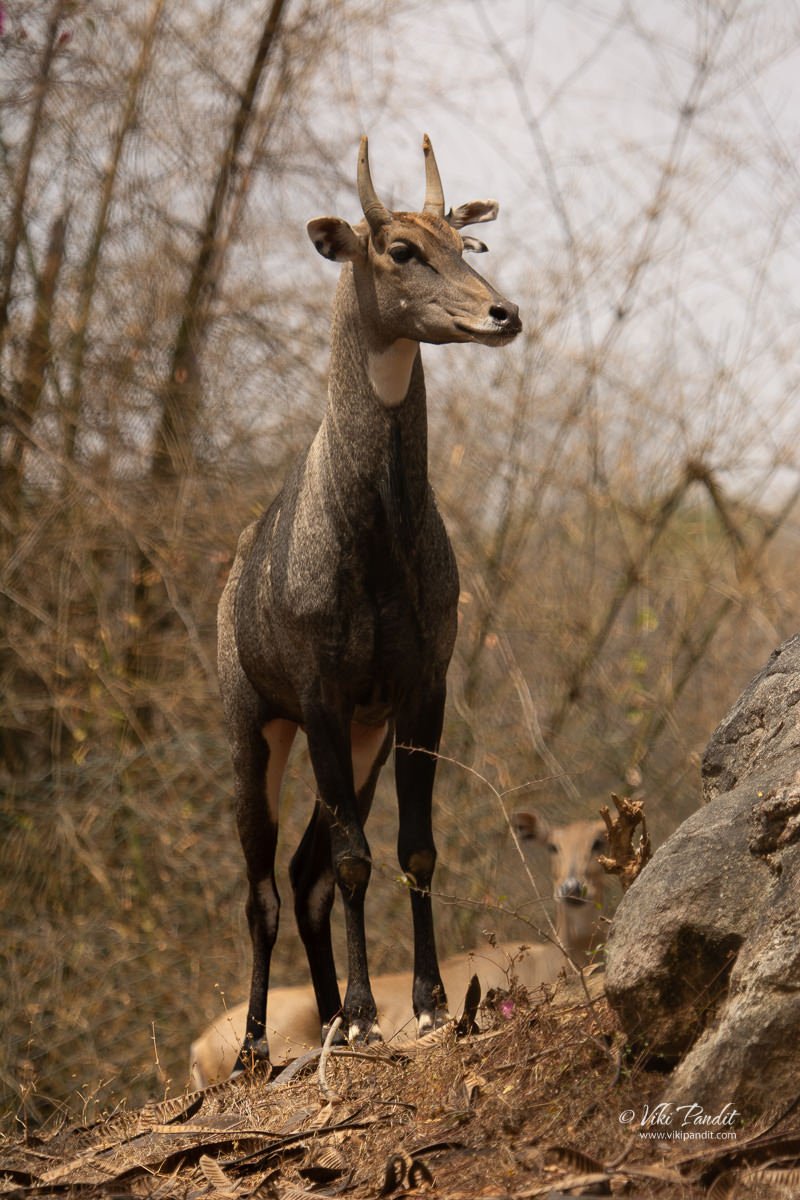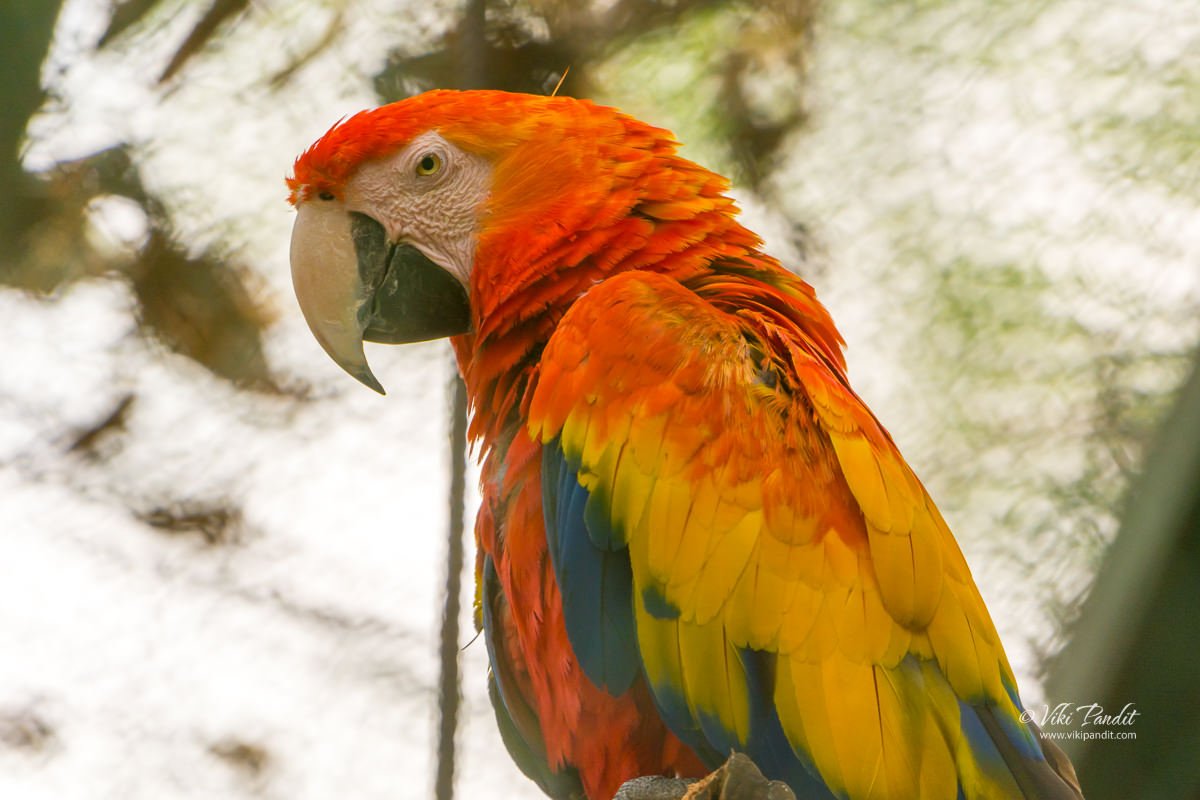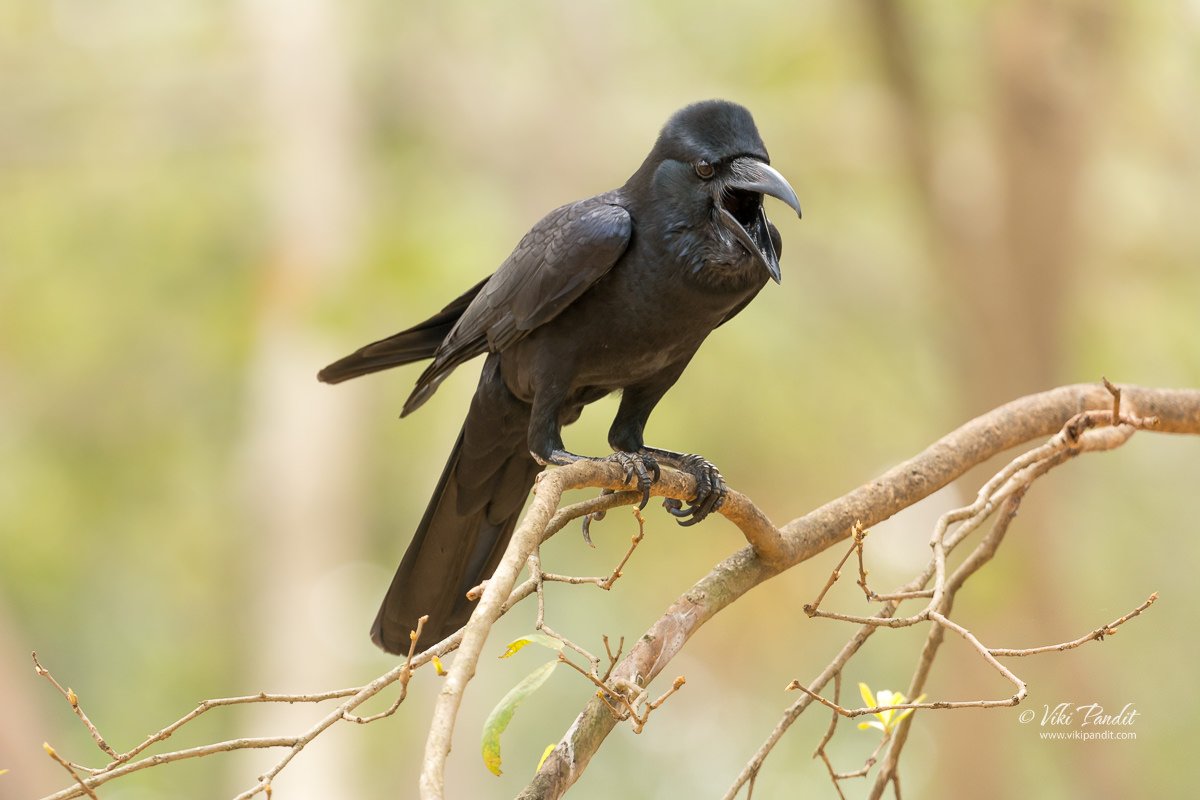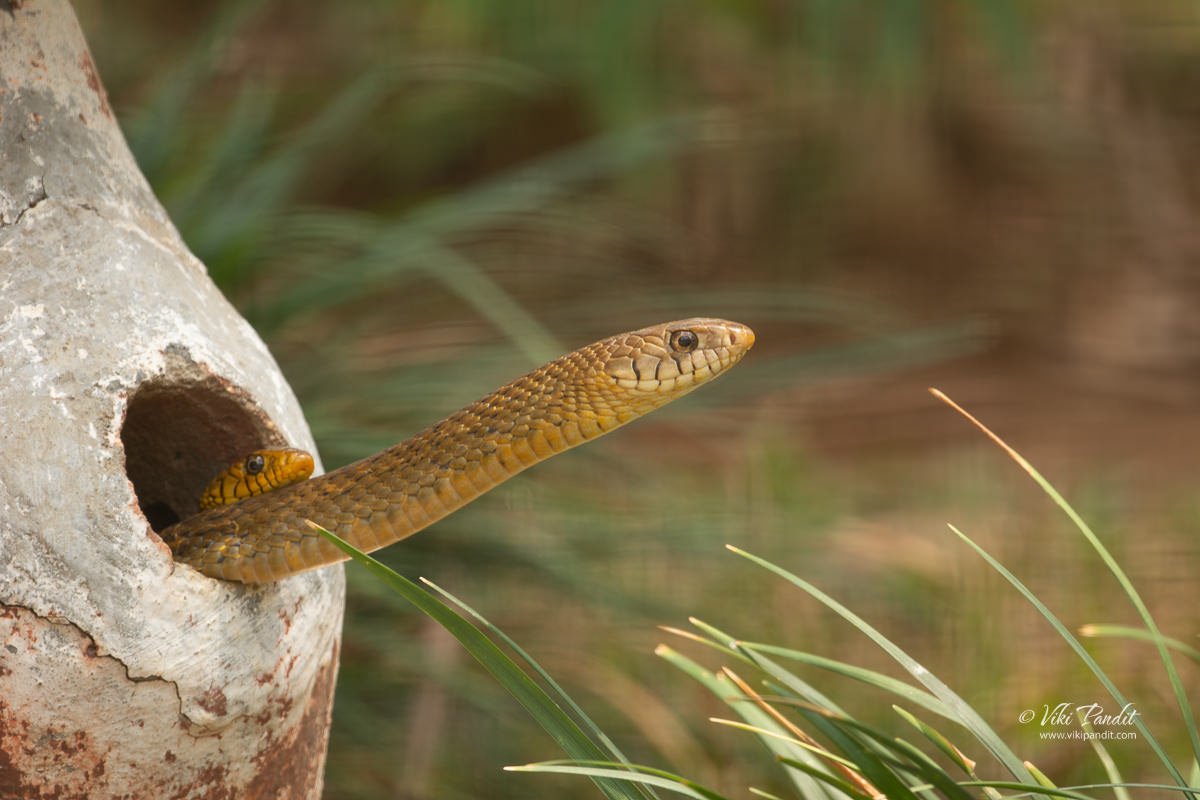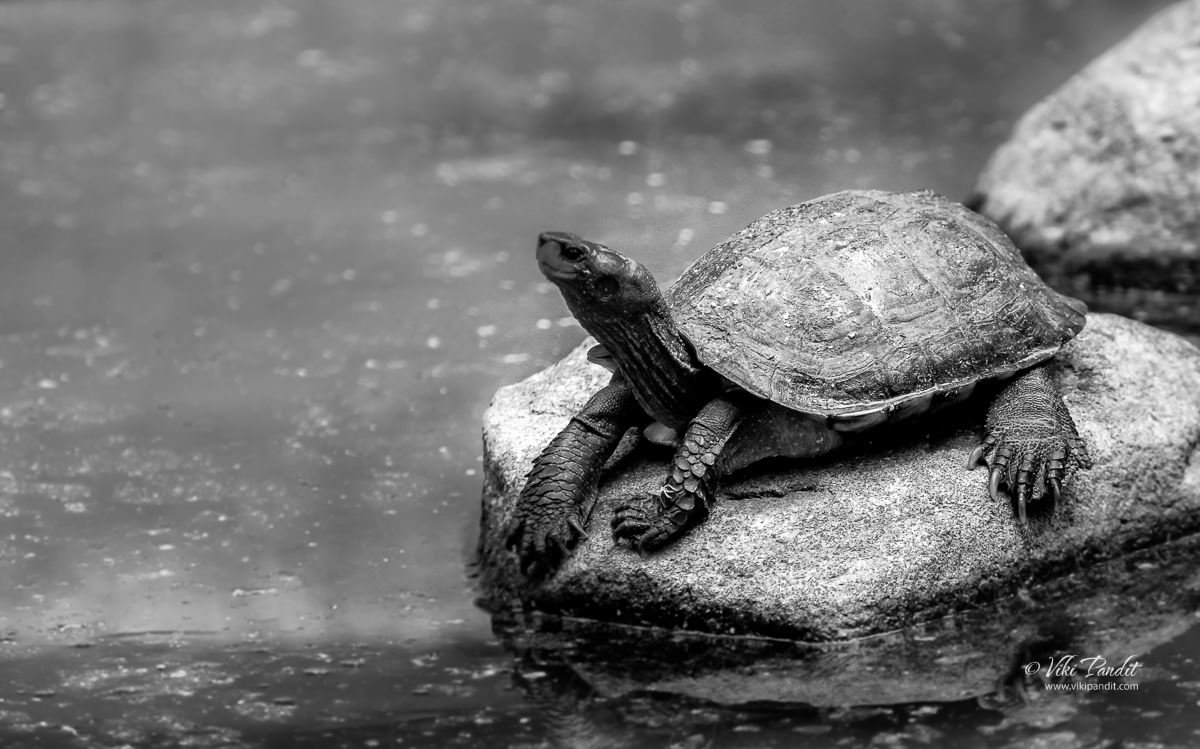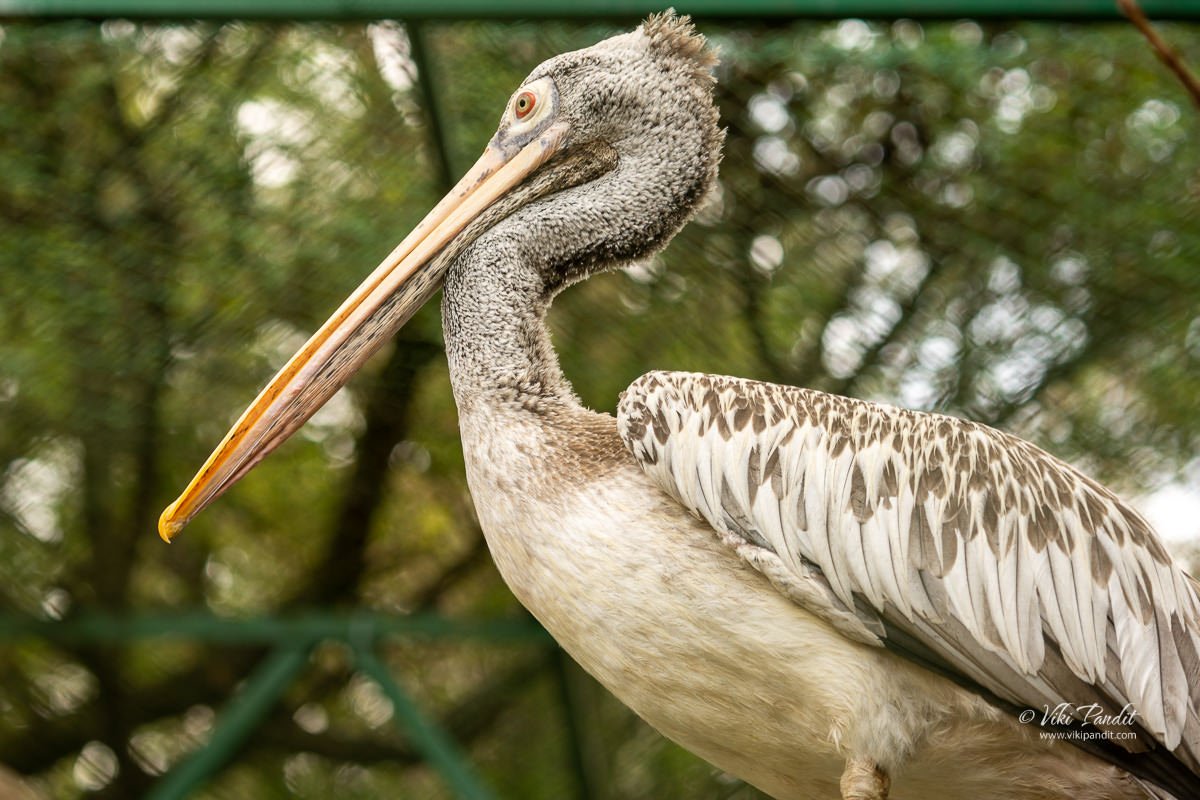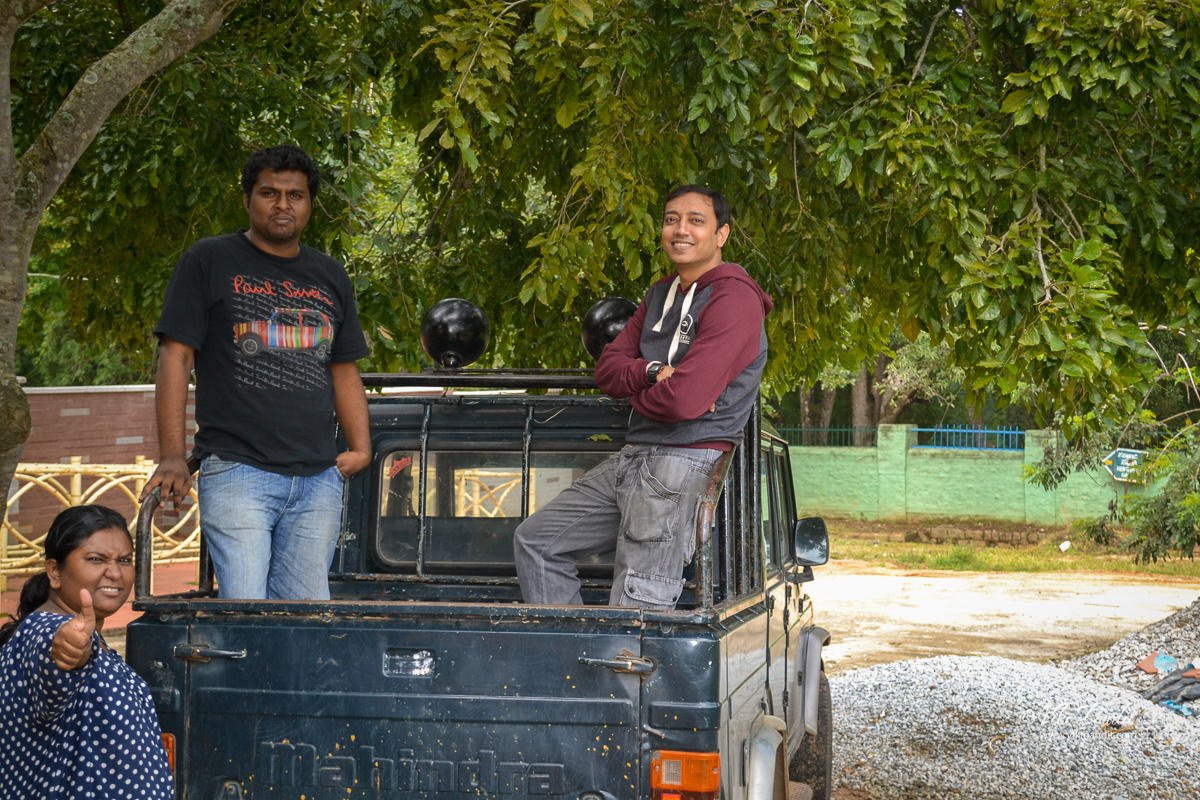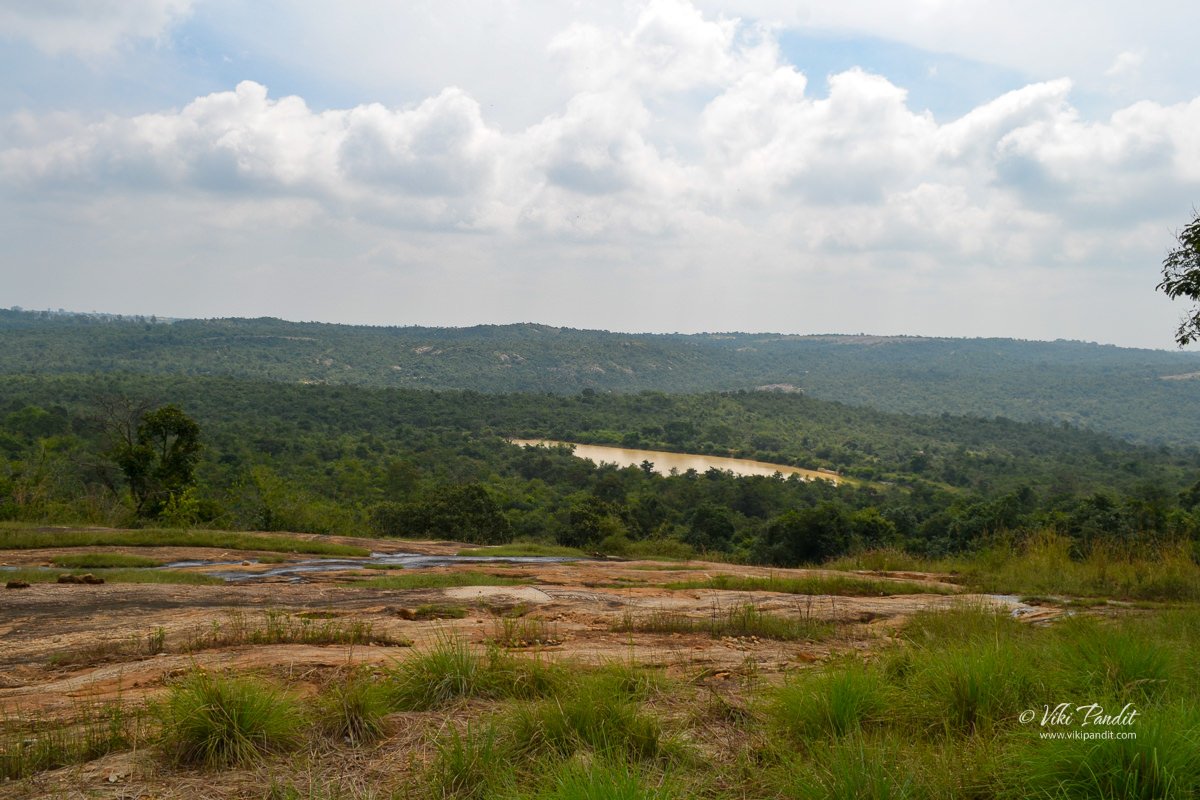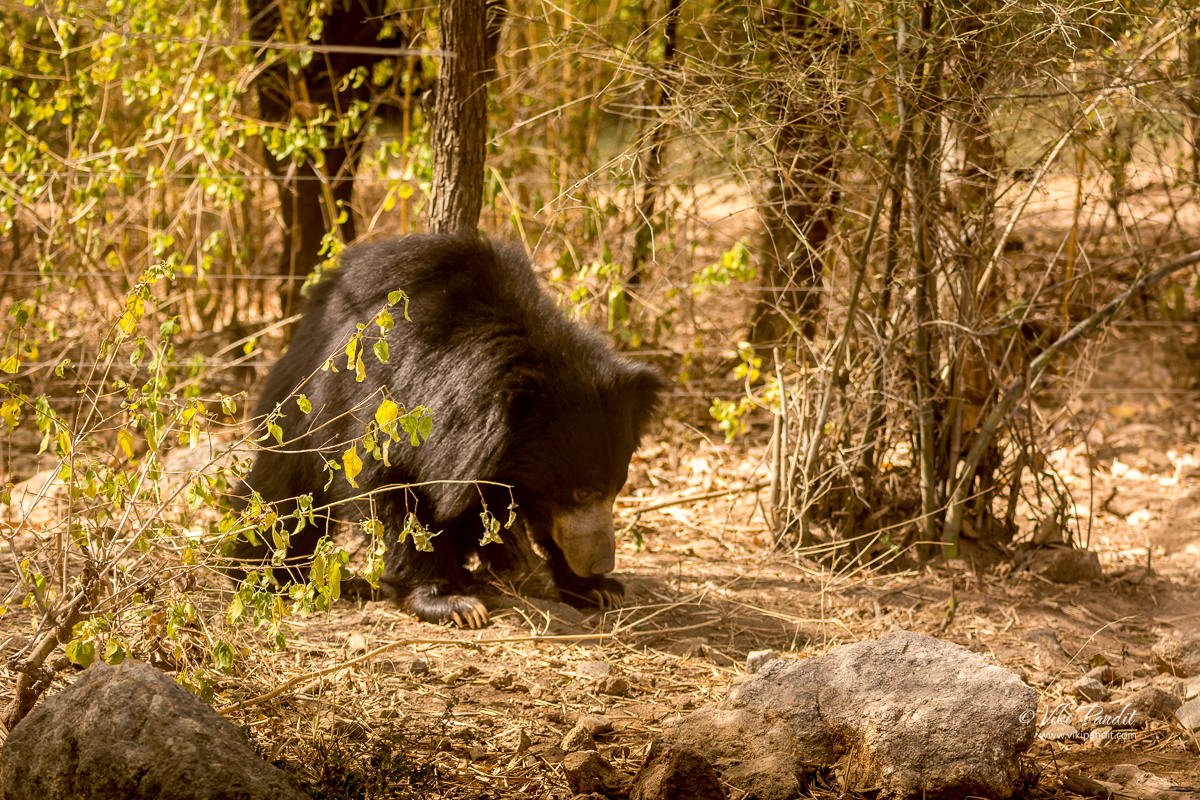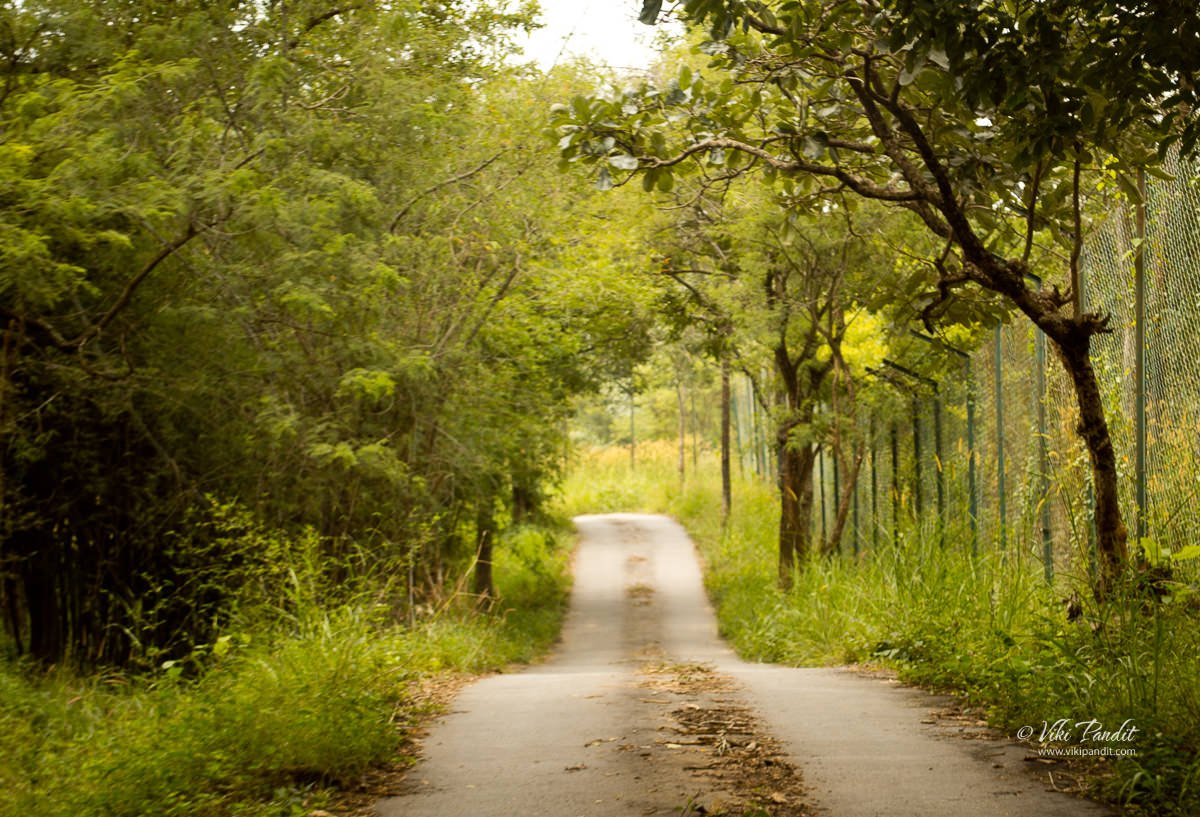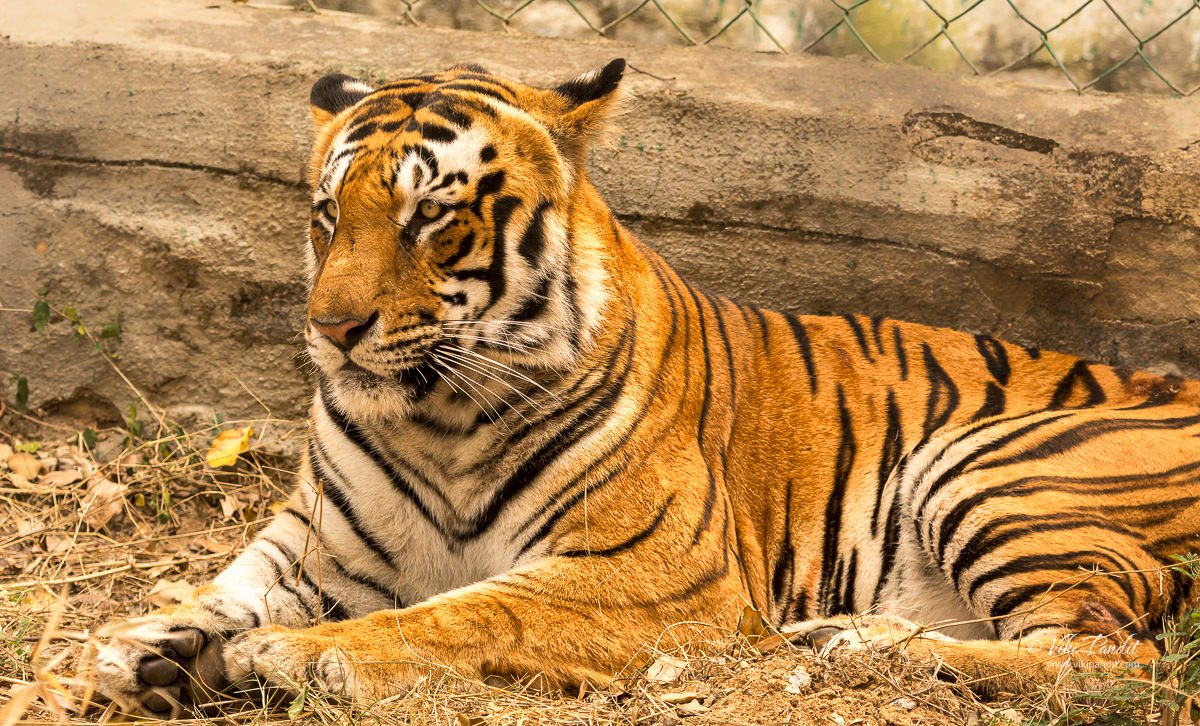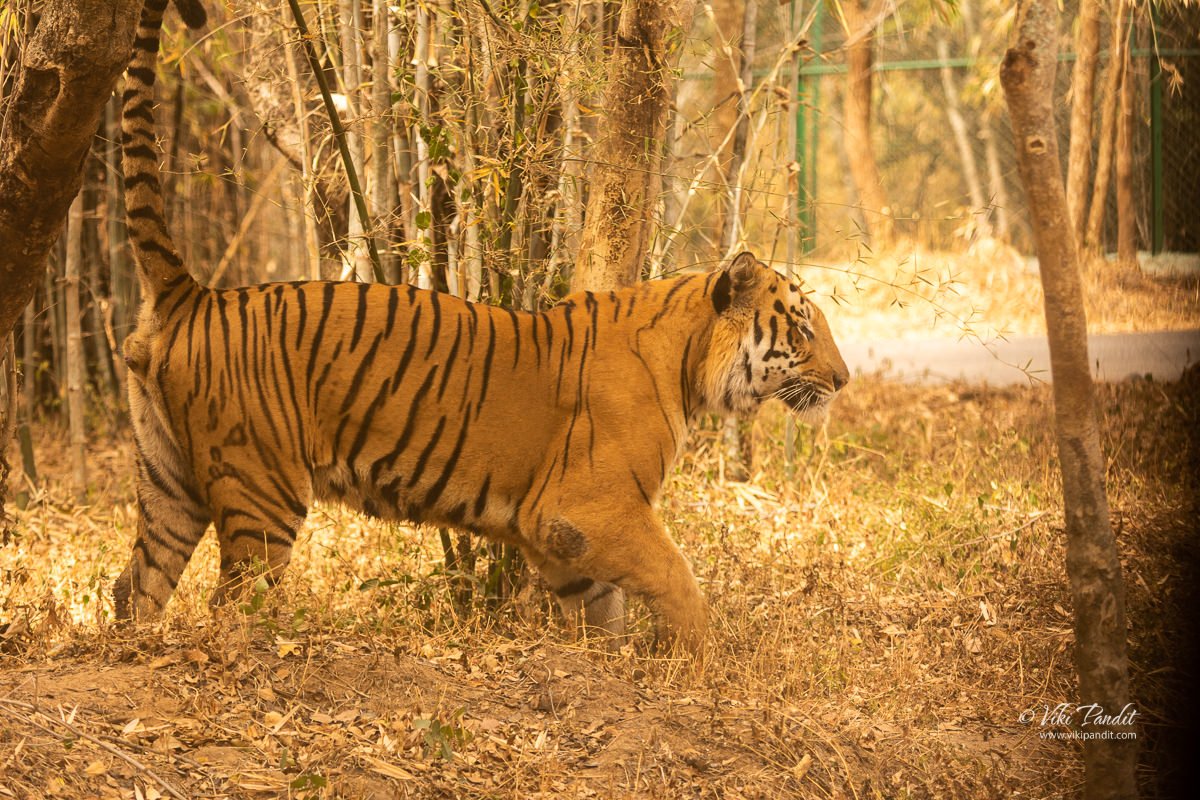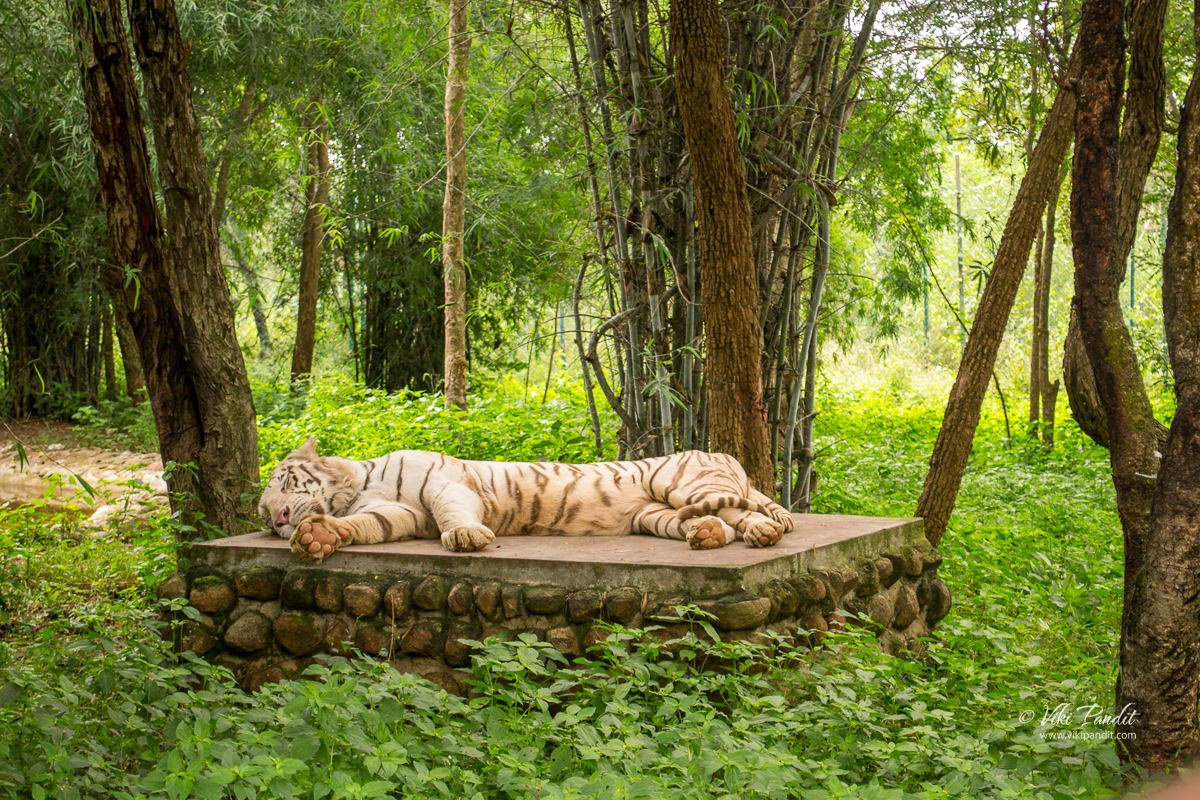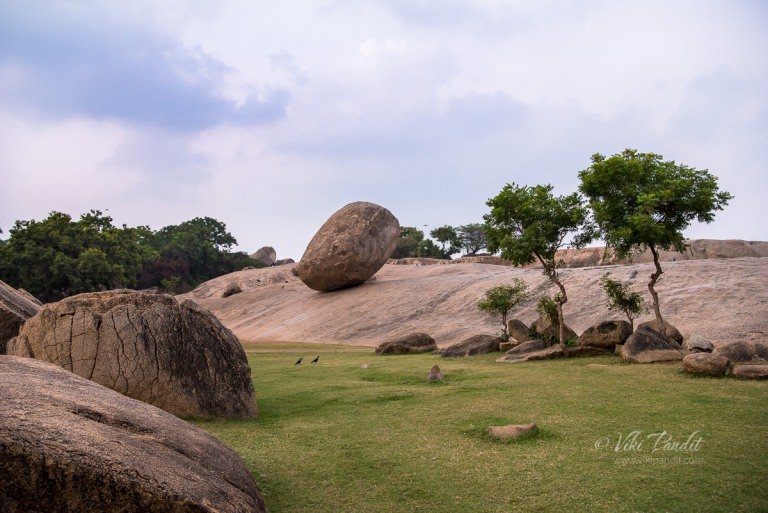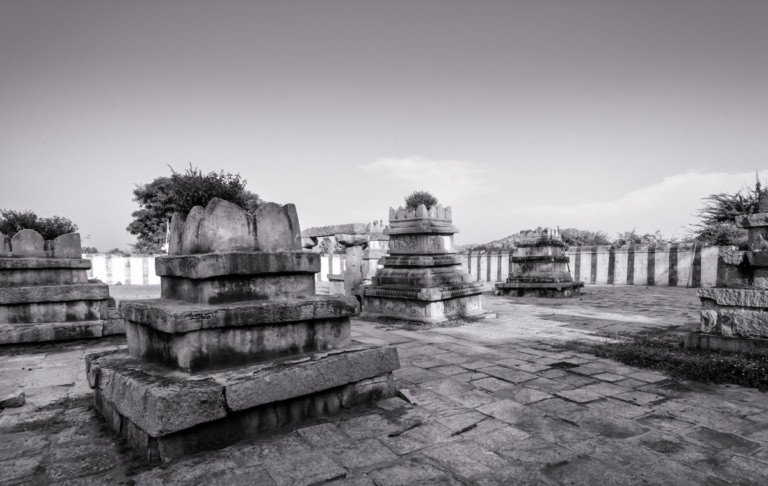My first jungle safari! It had its moments when I was elated like when I saw a Royal Bengal Tiger not more than a foot away from me and disgusted when I saw elephants tied to chains in what was supposed to be a wildlife safari.
A real jungle just beside a concrete jungle
Bannerghatta National Park or BNP is just a 30-minute drive from where I stay. I don’t think I have ever seen any jungle so close to the city. So Mani, and I invited a couple of our friends and dropped down to the park. In all, Bannerghatta National Park or BNP is 25,000 acres of carefully preserved jungle. It is situated on the northern terminal point of Mysuru Elephant Reserve connecting forest reserves of Karnataka, Tamil Nadu and Kerala. The Park plays an important role in the conservation of rich flora and fauna diversity.
Now when I talk about the park, I mean the Bannerghatta Biological Park, which is a very small part of Bannerghatta National Park. The park started off as a small Zoo/picnic corner in 1974 within Bannerghatta National Park mainly for recreation purposes. The Bannerghatta Biological Park, popularly known as BBP emerged out as an independent establishment only during the year 2002. Presently, the interesting areas for visitors are:
- Bannerghatta Zoo
- Bannerghatta Safari
- Bannerghatta Butterfly Park
The entrance to the park has some lovely trees. This Jaracanda was in full bloom at the time I was there. There are other several flowering trees surrounding the park.
Brief history of Bannerghatta Biological Park
One of the names that deserve a big credit for the development of the Bannerghatta Biological Park is to Y.M.L Sharma who was the then Chief Conservator of Forests and Head of the Forest Department in 1974. It was he and his team who are responsible for identifying the need for a place where Bengalureans could enjoy the solitude of the wilderness. He was instrumental in visualizing and creating the biological park where people could connect with nature during weekends.
In 2002 when Bannerghatta Biological Park emerged out as an independent establishment from BNP, it was brought under the administrative control of the Zoo Authority of Karnataka. Over time a Zoo, a Butterfly Park, and several Safari units were started within the area of Bannerghatta Biological Park. Today the BBP is spread over a huge 730 Hectares.
Now let’s talk about the Safari. There are two types of Safari available – the Bus safari and the Jeep safari. There was four of us, so we went for the Jeep. The Jeep safari cost us around Rs. 2000. It takes 4 people at a time. If you have an extra person, they will charge another Rs. 500, and the person can sit in the last row of the jeep. The bus ride although inexpensive just doesn’t have the thrill of the adventure. Also, it is impossible to see the animals on the other side of where you are seated.
Once we got the Safari tickets, we were asked to wait for an hour or so until the jeeps on tour could return. We spent that time at the Zoo.
The Safari tickets also allow you to enter the Zoo at no extra cost.
Zoo Walkaround
The Zoo enclosure is huge and contains some unique animals. The present extent of Zoo area would be around 12 Hectares. The area is saddled between Champakadhama hill and Mirza hill. Like I mentioned before, it started in a very modest way in the form of a “Picnic corner” in order to provide picnic facilities to the urban population leaving in the vicinity of Bengaluru. With changing times the priority shifted to the welfare of wild animals.
Bannerghatta National Park and Zoo is a plastic-free zone. Do not carry beverages in plastic bags. The caretakers at the entrance will make you throw away all plastic carry bags/bottles or transfer your food into paper bags provided by them.
A variety of mammals, reptiles, and birds of both exotic and Indian origin comprising 2000 animals belonging to 94 species are displayed in captivity at the Zoo. I am not a fan of the concept of a Zoo, but it does have its place in the current ecosystem where not everyone can afford the luxury of camping in the woods to witness the wild animals surrounded by breathtaking nature. I would also like to point out that the Zoo here is different from the other Zoos as the animals get proper attention and adequate space in their enclosures.
With the Zoo being sandwiched between two hills, it always maintains a cozy climate throughout the year. Before we begin your photo journey, let me add a map for you so it is easier to follow. At present, there are about 58 enclosures in the Zoo area. I am going to take you on a picture tour as depicted by the arrows on the map below. Naturally when you visit you can move around in whichever way you wish to. It’s not a set path.
I was only able to capture some of the residents as the rest were either taking a nap or hiding away in some corner of their enclosures.
Ostrich
Let’s begin with the Ostrich. It is a species of flightless bird native to certain large areas of Africa. It is the largest and heaviest living bird. As its species name, camelus, suggests, it was once known as the “camel bird” because of its long neck, prominent eyes, and sweeping eyelashes, as well as its jolting walk.
Also, like camels, the ostrich can tolerate high temperatures and go without water for long periods of time. The Zoo authorities have provided a big enclosure for the bird as it loves to run. Shallow areas filled with mud have been added to the enclosure to aid mud bath during summer and to keep their feathers clean.
Emu
The Emu is the second-largest living bird by height, after the ostrich. They are members of the Ratite family, which also includes ostriches, cassowaries, and rheas. It is endemic to Australia where it is the largest native bird. A water puddle is added to the enclosure for the Emu’s so they can indulge in a water bath to cool their body during the hotter days in Bangalore.
Emus have tiny, useless wings, but their legs are long and powerful. They can travel long distances at a fast trot and can sprint at 48 kilometers per hour for quite a distance.
They have a pouch in their throat that is part of their windpipe and is used for communication. When the pouch is inflated, the Emu can make deep booming and grunting sounds.
Striped Hyena
Native to northern Africa, the Middle East, and India, striped hyenas eke out a life in semideserts, rocky scrublands, and savannas. It belongs to a family of Hyaenidae and lives in small groups of one female and several males.
Their muzzle, ears, and throat are entirely black, but their coat may be golden yellow, brown, or gray with black stripes on the body and legs. The striped Hyenas have amazing hearing. They can hear sounds that human ears cannot, and hear sounds from other predators that may lead them to a kill that is miles away.
Jackal
Jackals are medium-sized omnivorous mammals of the subtribe Canina, which also includes wolves and the domestic dog, among other species.
Their long legs and curved canine teeth are adapted for hunting small mammals, birds, and reptiles, and their large feet and fused leg bones give them a physique well-suited for long-distance running, capable of maintaining speeds of 16 km/h for extended periods of time.
Deer Park
A few paces away from the Jackal’s enclosure you can find a large park full of various types of deer. The Blackbuck, Sangai Deer, Indian Hog Deer, and the Barking Deer are all banded together in this enclosure separated by nets.
Black Buck
The blackbuck, also known as the Indian antelope, is an antelope native to India and Nepal. It inhabits grassy plains and lightly forested areas with perennial water sources.
Male and female blackbucks have distinctly different appearances. Male blackbucks have long, spiral horns, and darker coats. Their faces and chests are black, with white rings around their eyes. The rest of their bodies are brown, and their undersides are white. Females have no horns and are a lighter caramel-colored brown.
Sangai Deer
The Sangai is an endemic and endangered subspecies of Eld’s deer found only in Manipur, India. It is also the state animal of Manipur. The brow-antlered deer or the dancing deer is found in its natural habitat only at Keibul Lamjao National Park. The Sangai was believed to be almost extinct by 1950. Even though their numbers have grown, it is still listed as “Endangered” in the International Union for Conservation of Nature Red List of Threatened Species and Schedule I of the Indian Wild Life (Protection) Act, 1972.
Culturally, the Sangai finds itself embedded deep into the legends and folklore of the Manipuris. It is believed that the name Sangai (sa “animal” and ngai “in awaiting”) was coined from its peculiar posture and behavior while running. By nature, the deer, particularly the males, even when running for its life stops occasionally and looks back as if it is waiting for someone and hence the name.
Indian Hog Deer
The Indian hog deer is a small deer native to the Indo-Gangetic Plain in Pakistan, northern India, Nepal, Bangladesh, and Southeast Asia. Its name derives from the hog-like manner in which it runs through forests with its head hung low.
The distinctive features of typical hog deer antlers are the acute angle between the brow tine and main beam, and the fact that the inner tops tend to be short and angle back from the main beam and across towards the opposite antler.
Barking Deer
The Indian muntjac also called the southern red muntjac and “barking deer” is a deer species native to South and Southeast Asia. The Indian muntjac has a short but very soft, thick, dense coat that is denser in cooler regions. Its face is darker and the limbs are dark to reddish-brown and the coat color seasonally varies from darker brown to yellowish and grayish-brown.
Its ears have much less hair, but otherwise are the same color as the rest of the head. Male muntjacs have short antlers, about 4 in long, that protrude from long body hair-covered pedicels above the eyes. Females have tufts of fur and small bony knobs instead of antlers.
Hippopotamus
The Hippopotamus, also called the hippo, is a large, mostly herbivorous, semiaquatic mammal native to sub-Saharan Africa. Hippopotamuses love water, which is why the Greeks named them the “river horse.” Hippos spend up to 16 hours a day submerged in rivers and lakes to keep their massive bodies cool under the hot African sun. Hippos are graceful in the water, good swimmers, and can hold their breath underwater for up to five minutes.
Hippos are among the largest living land mammals, being only smaller than elephants and some rhinoceroses. Unlike most other semiaquatic animals, hippos have very little hair. A hippo’s lifespan is typically 40–50 years. The enclosure of the Hippopotamus seemed a bit small and needed more water.
Indian Elephant
What do I write about Elephants? Elephants are very much a part of our life through temples or during parades. They are the largest existing terrestrial animals. Asian elephants have been listed as endangered for some time now. In the past, they were used in war. Even Alexander was forced to withdraw from his campaign of conquering the world after facing ferocious elephants in India.
Elephants are highly recognizable and have been featured in many folklores in Indian mythologies over time. Because of their large size, elephants have a huge impact on their environments and are considered keystone species. Their habit of uprooting trees and undergrowth can transform savannah into grasslands. When they dig for water during drought, they create waterholes that are used by other animals.
Elephants typically coexist peacefully with other herbivores. Elephants exhibit mirror self-recognition, an indication of self-awareness and cognition that has also been demonstrated in some apes and dolphins. Elephants are popularly thought of as having an excellent memory. They possibly have cognitive maps to allow them to remember large-scale spaces over long periods of time. Today, they are often controversially put on display in Zoos.
Indian Grey Wolf
The Indian wolf is a subspecies of grey wolf that can be found from Southwest Asia to the Indian Subcontinent. The Indian grey wolf is endangered and its population is estimated at 2,000-3,000, mainly in Rajasthan, Maharashtra, and Karnataka. They are similar in structure to the Eurasian wolf, but smaller in built with shorter fur.
Indian wolves are nocturnal and hunt from dusk to dawn and they are said to be exceptional in speed and endurance. The conversion of forests to agricultural fields has shrunk its hunting ground, reducing wild prey. As a result, the Indian wolves sometimes also feed on livestock when natural prey becomes scarce and also have a history of preying on children living in villages near these jungles.
Nilgai
The Nilgai is the largest Asian antelope and is ubiquitous across the northern Indian subcontinent. A sturdy thin-legged antelope, the nilgai is characterized by a sloping back, a deep neck with a white patch on the throat, a short crest of hair along the neck terminating in a tuft. Males have 8 -10 inch long horns. The male coat is gray-blue and the female coat is yellow-brown in color.
The Nilgai has been associated with Indian culture since the Vedic period (1500–500 BCE). Nilgai is widely found in the jungles of Karnataka, Rajasthan, West Bengal, Assam, and Haryana.
Leopard
Leopards are graceful and powerful big cats closely related to lions, tigers, and jaguars. It occurs in a wide range in sub-Saharan Africa, in some parts of Western and Central Asia, Southern Russia, and in the Southeast parts of the Indian subcontinent. Compared to other wild cats, the leopard has relatively short legs and a long body with a large skull. Its fur is marked with rosettes. They can run at speeds of up to 58 km/h.
The leopard is so strong and comfortable in trees that it often hauls its kills into the branches. Leopards can also hunt from trees, where their spotted coats allow them to blend with the leaves until they spring with a deadly pounce. Leopards are strong swimmers and very much at home in the water.
Mugger Crocodile
The Mugger Crocodile is a medium-sized broad-snouted crocodile, also known as mugger and marsh crocodile. It is native to freshwater habitats from southern Iran to the Indian subcontinent, where it inhabits marshes, lakes, rivers, and artificial ponds. The mugger crocodile evolved at least 4.19 million years ago and has been a symbol for the fructifying and destructive powers of the rivers since the Vedic period.
Ghariyal
Gharials and mugger crocodiles are found living in overlapping habitats. Gharial derives its name from ghara, a Hindi word for pot because of a bulbous knob present at the end of their snout. The attenuated snout and rows of uniform sharp teeth supported by a relatively long, well-muscled neck make it a most efficient fish catcher.
Gharials being of lighter colouration need more heat to warm their bodies
Gharials have specific habitat requirements; so they do not leave perennial river habitats. They prefer deep fast flowing rivers, however, adult gharials have also been observed in still water branches (jheel) of rivers and in comparatively velocity-free aquatic environments of deep holes (kunds) at river bends and confluences.
Scarlet Macaw
The scarlet macaw is a large red, yellow, and blue Central and South American parrot. Scarlet macaws are iconic animals in the tropical forests of Mexico, Central America, and South America. Soaring through the canopy, these large parrots fill the forests with their loud vocalizations, crack nuts and unripened fruits with their powerful beaks, and spend hours preening the feathers of their lifelong mates. At the Zoo, whole walnuts, almonds and sugarcane sticks are given to macaws and other parrots occasionally, to allow these birds to break open the hard shell using their strong beak.
Common Crow
I took this photo in jest as it has been quite a few months that I have seen crows around in Bangalore. Pigeons are more common in the area where I stay.
Rat Snake
Rat snakes are an intrinsic part of almost all landscapes in India. They are large non-venomous snakes between one and two meters long. They have shiny scales on their back and a light colored belly. They pose no threat to humans. The bite of the Indian rat snake is harmless to humans. The rat snake is often mistaken for a cobra, but the black lines between the scales on its lip are a sure-fire way of distinguishing it from its venomous cousin.
When threatened, the rat snake will raise its forebody a little off the ground, expand its neck downward and growl. Water sprinkler for reptiles and mammals to keep their body and environment cool during hot days.
Indian Roof Turtle
Green Iguana
Iguana is a genus of herbivorous lizards that are native to tropical areas of Mexico, Central America, South America, and the Caribbean. These lizards possess a dewlap and a row of elongated scales running from the midline of their necks down to their tails. Iguanas have keen vision and can see shapes, shadows, colors, and movement at long distances. Their visual acuity enables them to navigate through crowded forests and locate food. Iguanas are often hard to spot, as they tend to blend into their surroundings, and their coloration enables them to hide from larger predators.
Green iguanas are large, typically green lizards, though they can sometimes be brown or almost black in color. Green iguanas have a row of spikes down the center of the neck, back, and upper portion of the tail, and have dark black rings on the tail. Mature male iguanas develop heavy jowls and a throat fan (or dewlap) that are much larger than those of female iguanas.
Aviary
Grey Pelican
The grey pelican, is a member of the pelican family. It breeds in southern Asia from southern Iran across India east to Indonesia. It is a bird of large inland and coastal waters, especially large lakes. These birds have been known to nest in large colonies close to human habitations. The species is found to breed only in peninsular India. They are very silent although at their nests they can make hisses, grunts or snap their bills.
Like most other pelicans, it catches fish in its huge bill pouch while swimming at the surface. This species was once used by fishermen in parts of eastern Bengal as decoys for certain fish. These fishermen believed that an oily secretion from the bird attracted certain fish.
White Peocock
The white peacock is a variation of the blue peacock native to the Indian subcontinent. White peafowl has a genetic mutation called leucism. This causes the inability of pigment to be deposited into their feathers which results in a white appearance. White peacocks are born yellow and turn white as they mature.
Indian Peacock
The Indian peacock has iridescent blue and green plumage, mostly metallic blue and green, but the green peacock has green and bronze body feathers. In both species, females are a little smaller than males in terms of weight and wingspan. The two Asiatic species are the blue or Indian peafowl originally of the Indian subcontinent and the green peafowl of Southeast Asia. When a peacock spreads his tail feathers, he is trying to attract a female’s attention or defend himself.
Once the Jeep became available, the designated driver called me and we left for the Safari.
Jeep Safari
The Safari unit is an expedition to observe the free-range captive wildlife in immersive, naturalistic exhibits in the midst of the Natural forests of Bannerghatta and Ragihalli Reserve Forest. The safari is jointly managed and monitored by Karnataka State Tourism Development Corporation (KSTDC) and BBBP. There are two safari buses kept for operation by the park authorities for high-end tourists. These two luxurious AC buses have better facilities. There will be an exclusive naturalist in these buses to conduct the tour and guide the visitors. The safari buses have a seating capacity of 30 per bus. In addition to the Buses and Jeeps, Xylo and Innova are also available to visitors, for safari rides in smaller groups.
The Safari ride takes about an hour. If you need to relieve yourself, do it before the safari. You cannot find any restrooms on the safari.
The area set aside for the Bannerghatta Biological Park campus is at one corner of the Bannerghatta National Park. It is a highly undulating terrain interspersed with barren rocky outcrops and valleys leading to the Suvarnamukhi River. There are many small, medium, and large water bodies that exist within and around the Biological Park. Further some of the natural and seasonal streams flowing down to the valleys within and around the Bannerghatta Biological Park.
The visitors are allowed inside the safari in the secured safari vehicles and have the thrill of wilderness by seeing them in the midst of the forest through keen and close observation. The route to the safari passes through the picturesque hillock Mettubunde giving an opportunity to the visitors to have the inspiration and breathe holding a panoramic view of the landscape of the broken chain of hillocks and valleys with lush green forests.
Herbivore Safari
This section was developed during the 1970s in the Bannerghatta Reserve Forest. It was opened to public viewing much later in 2002. The entire area comprising 121.41 Ha has been barricaded with a stone wall along with the additional support of a solar power fence and Elephant proof trench. The vegetation in the safari is more favorable to the herbivore animals round the year as a large number of fodder species like bamboo and Anogeissus intermitted with a vast extent of foreshore area of the water bodies.
The edible grass species such as sacharam, cymbogogon and heteropogon are commonly seen in the grass land and constitute the main fodder. Few patches of shorea talura also found within the safari and serving as the standing shade for the animals. There are 5 water bodies found in the safari area namely, Deepankere, Chennamanakere, Gowdankunte and Seegadikunte, Gowdanakere. These water bodies are perennial and serve as the source of water for the inmate animals during all the seasons.
The animals found in the safari are Gaur, Sambar, Chital, Barking Deer, Black Buck, Hog Deer and Nilgai. The other animals naturally found in the safari are wild boar, porcupine, pangolin etc.
The driver drove very rashly, and all we could get out of him was so we could “feel the adventure.” We passed a beautiful lake with a herd of Elephants on the banks. I was miffed seeing their feet tied with chains. It must be so they stay put for the safari visitors. Some things I just don’t get. most probably commercialization ideas being so close to the city.
Bear Safari
The Bear Safari was first established in 2002 in the Ragihalli Reserve Forest. The Safari area is provided with a peripheral open dry moat covering about 18.00 Ha. The outer wall of the moat is embedded with stone slabs all around in order to prevent the sloth bear escape or to avoid trespass of any other free-ranging wildlife into the Safari. There are around 100 animal holding rooms with a facility of a kitchen. The forest area is planted with varieties of fruit-yielding trees to create a natural habitat for the bears.
The facility created in the Bear Safari also maintains a number of bears rescued from Kalandars from all over India. As we drove on, we noticed some Sloth Bears sitting at the edge of the road. We stopped there for a few minutes. We also happened to see a group of Spotted Deers along the way.
Lion Safari
The lion safari was first established in 1979. It is an open enclosure created in an area of 5.00 Hectares of Ragihalli Reserve Forest in 1979. All around the 5.00 Hectares of forest area, a tall chain link mesh with a height of around 15 feet has been erected. Further, a big moat all around the chain link mesh fence has been created to avoid the tress pass of any wild animals living in the area. The animal house is provided with 11 holding rooms and all 11 holding rooms are provided with a retrieval area for the daytime rest. The identified groups of animals are only allowed into safari on a rotational basis regularly for the benefit of visiting tourists.
Some 10 minutes into the ride, we entered the Tiger enclosure. We passed a sleeping White Tiger, who just refused to pose for us. Further on we were a bit luckier to get some shots of the beautiful Royal Bengal Tiger. They are just so majestic. One of them even grazed our Jeep.
The driver told us that a few years ago there was an incident when a Tiger had snatched a girl away from the bus ride. We kept our windows closed for the rest of the tour 😐
Tiger Safari
The lion safari was first established in 1987 in the Ragihalli Reserve Forest. It is divided into 3 units, namely:
- IG Tiger Safari – 6.00 Hectares
- Appaiah Tiger Safari – 8. 00 Hectares
- White Tiger Safari – 1.00 Hectares
The peripheral boundary has been created for all the 3 units by digging open moat and erecting chain link mesh fence and covers an area of about 15.00 Hectares. The Tiger Safari has the facility of 11 holding rooms.
The Appaiah Tiger Safari has the facilities of 2 animal housing complexes.
Both animal houses together have 10 animal holding rooms.
The White tiger safari has the facilities of 2 animal housing complexes. There are in total 8 animal holding rooms. All the holding houses are provided with basic facilities of water and sanitation. The identified groups of animals are only allowed into safari on a rotational basis regularly for the benefit of visiting tourists.
The Safari was over in like 40 mins and we headed back.
Other attractions at Park
Butterfly Park is one of the unique attractions in Bannerghatta National Park that you generally don’t find with a Zoo. A large building just outside the Zoo has many species of butterflies. In fact, many butterflies found in the Zoo and the surrounding forest areas are caught and taken to Butterfly Park. Don’t miss visiting this place.
You can also go boating in Kavalkere Lake inside the Zoo premises.
There is an old Nature Camp that was developed by the Karnataka Jungle Lodges and Resorts into a resort in 2002. The Jungle Lodges and Resorts Ltd. also runs a restaurant called the “Hill View Restaurant” within the Zoo premises.
I had a wonderful day at the park. I got some lovely photos of the residents at the Zoo. If you are a shutterbug, let me tell you that the safari isn’t as great if you looking to capture great photos. On the Safari, many of the animals were on a nap. I had better luck taking pictures at the Zoo.
However, if you are one who loves animals in their natural habitat, you must head towards Bannerghatta Biological Park. It is very rare to have a natural forest in the neighborhood. Bengaluru is particularly fortunate in having the “Bannerghatta National Park”, just a few kilometers from the heart of the city. The landscape beauty of the surrounding forest, the favorable climate, and the transport facilities available assist the visitors to reach the place as and when they wish. On average, around 1.50 million people visit this place annually.
- Come early. The later you reach, more the crowd gathers.
- Choose a weekday if you can. Week-ends and holidays are really busy and crowded at the park.
- Go for the Jeep ride. Bus ride is no fun. You can hardly see the lovely animals.
- If you are interested in Butterflies, try to come during August-September.
- There is a Volvo Bus Service from Majestic Bus Station which is pretty regular #365.
- The whole experience will not take more than 3-4 hours.
Faqs (Updated: Sept 2021)
Bannerghatta Zoo Timings: 9:30 AM – 5:00 p.m
Weekly Closure: Tuesday
Bannerghatta Safari Timings: 10:00 AM – 4:30 PM
Non AC Bus Safari (Zoo+Safari)
Rs 300/- Monday to Friday
Rs 350/- Saturday, Sunday & Govt Holidays
AC Bus Safari (Zoo+Safari+ButterflyPark+Camera)
Rs 600/- Monday to Friday
Rs 650/- Saturday, Sunday & Govt Holidays
Jeep Safari (Zoo+Safari+ButterflyPark+Camera)
6 Seater Non AC Jeep: Rs 3500/
6 Seater AC Jeep: Rs 4000/-
6 Seater AC Xylo: Rs 4500/-
8 seater non AC Jeep: Rs 4500/-
7 seater Innova Car: Rs 5500/-
Adults: Rs 100/-
Children: Rs 50/
Still Camera charge: Rs 50 /-
Video Camera charge: Rs 250 /-
Adults: Rs 100/-
Children: Rs 50/-
Disclaimer: The information presented in this article is based on the time I visited the premises. Note that there might be changes in the prices of merchandise and admission fees that might have occurred after this article was published. At times the facility might also be closed for repairs or for variety of other reasons. Kindly contact the facility or facilities mentioned in this article directly before visiting.
Usage of this site indicates acceptance of my Terms and Conditions.
Credits: The historical information presented herein is gathered mostly from local guides that were re-inforced via historical writings.
